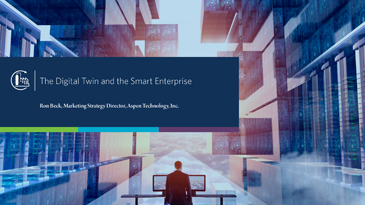Globally, the energy industry’s digitalization is being fast-tracked in response to global economic shockwaves and uncertain demand for and pricing of energy products. Companies are grappling with running oil fields, pipelines and refineries with the minimum possible number of workers in close proximity in the field and the plant.
As economics tighten, it is more important than ever to maximize productivity and uptime of assets. This requires better monitoring of equipment and processes to ensure asset integrity and safety, often remotely.
McKinsey, in a report jointly presented with the World Economic Forum, projects that industrial companies who are leaders in artificial intelligence (AI) adoption will significantly outperform companies that are slow to adopt. They are the ones who will capture the bulk of the growth and stockholder value benefits over a sustained period.
The question is, how do you develop an effective AI strategy that suits the unique engineering domains that govern safety and effectiveness in refineries, chemical plants and oil and gas fields?
Enter Industrial AI — that is, the embedding of machine learning within applications that solve domain-specific, high-value problems for industry. “Vanilla” data analytics, employed by data scientists with no domain expertise, are prone to capturing correlations that are not sensible in the context of industrial environments. AspenTech climbs beyond that challenge by combining the decades of domain expertise contained within our rigorous first-principles models with advanced AI algorithms, and applying these to asset data streams in a way that solves the hardest industry challenges faster and better than ever before.
So how can you become an early adopter and position yourself to capture value from the data streams being collected in your assets?
Currently, a company typically only uses only a small amount of the data it has collected. The most agile companies today are pursuing digital twins as a way to assimilate digitalization into their operations and as a way to capture value in the short term. The digital twin (a virtual copy of your company’s assets and business) provides a practical approach which can unlock the potential of the massive data mountain in each company.
Leading companies are reporting some very impressive results and building momentum in their organizations. Here are five simple steps to quickly evolve your operations to leverage digitalization, achieve value today and position your organization to take advantage of Industrial AI.
Step 1: Define Business Value
Digital twins can start small and expand. You will need a roadmap to move from simpler digital twin projects, which create excitement and value, and then broaden the approach. This roadmap needs to closely follow your key business initiatives:
- What are your most critical business pains today?
- Which will yield faster to a data-driven digital twin approach?
- Can you map the digital twin to the value that it will provide in addressing your business initiative?
Step 2: Learn From First Movers
We have published over 30 digital twin case studies, in which AspenTech customers have shared the details of how they have gone about defining digital twin projects, implementing them, explaining why they were successful and measuring value. This is an area where the first movers are often willing to share their experiences. Many of the benefits achieved, such as asset integrity, process safety, sustainability and energy optimization, really benefit the whole industry collectively if more companies are having success in these areas, so there is substantial information sharing.
Take advantage of the opportunity to learn from other companies. ADNOC, for example, working with an agile service provider partner of AspenTech (Equinox), created an energy and sustainability digital twin for their Shah gas field, monitoring energy, water and emissions asset-wide, with a dashboard used by hundreds of workers across the operation. This was all put in place in less than a year by Equinox, which has completed over 100 projects over three continents, including dozens of digital twins. There is the opportunity for others to learn from that project, move quickly based on a successful example and take it to the next level.
Step 3: Define a Stepwise Approach
There is a tendency in the areas of digitalization and digital twin to try to cover too much ground at once. However, one of the biggest advantages of the flexible digital twin approach (based on building blocks) that AspenTech advocates is the ability to start with a contained scope to solve a specific business problem, and then expand from there. The key, again, is to understand the scope of the problem that needs to be solved and not overdesign the solution. It’s also important to take an architectural approach, so the solution is extensible.
As an example, a major oilfield operator was facing a specific challenge involving compressor trains being used to deliver gas for reinjection. The unpredictable performance of those systems was directly impacting production, and therefore revenue. By defining the problem clearly, an extremely effective digital twin was developed and implemented in only a few weeks, and most of the work actually only took several days.
Once implemented, the digital twin was immediately popular with operators, and within a month returned over $1 million in incremental revenue. This was then expanded to four other similar process systems in a short period of time, and then the approach was applied to a completely different asset type to solve a different business problem in another part of the world. The stepwise approach first proved the value to both the operators and funders, and then became of organizational value.
Step 4: Don’t Try This at Home
Technology is moving very fast in the areas of data cleaning, data analytics, fast-performing online models and Industrial AI. The strong benefit of using off-the-shelf digital technology, such as AspenTech’s Asset Optimization suite, are huge.
Software is evolving so rapidly, and new algorithms are being developed, so there is a significant benefit in selecting a solution partner and adopting technologies that embed data science and Industrial AI, rather than trying to build customized solutions. The risk is that in-house customized solutions will become obsolete before they are completed, while software organizations such as AspenTech are in the business of future-proofing solutions to take advantage of the technological innovation that is happening at a breakneck pace.
Step 5: Measure Success And Expand
As you proceed to implement digital twins, it’s important to measure success, make course corrections and broaden your digitalization efforts as you go. To measure success, create a “before” baseline, measure the change, and evaluate the approach. As evidenced by the McKinsey analysis referenced at the top of this blog, early adopters of machine learning and AI are extremely likely to build up a long term competitive advantage. Part of that advantage is learning from experience. Start digital twin projects. Learn from them. They will not all achieve the value you expected. Understand why. Adjust and move on.
If you’d like to learn more about this technology and the opportunities it can create, please read our recent white paper The Digital Twin and the Smart Enterprise. You can also listen to my recent podcast "Digital Twin and the Smart Enterprise."





Leave A Comment